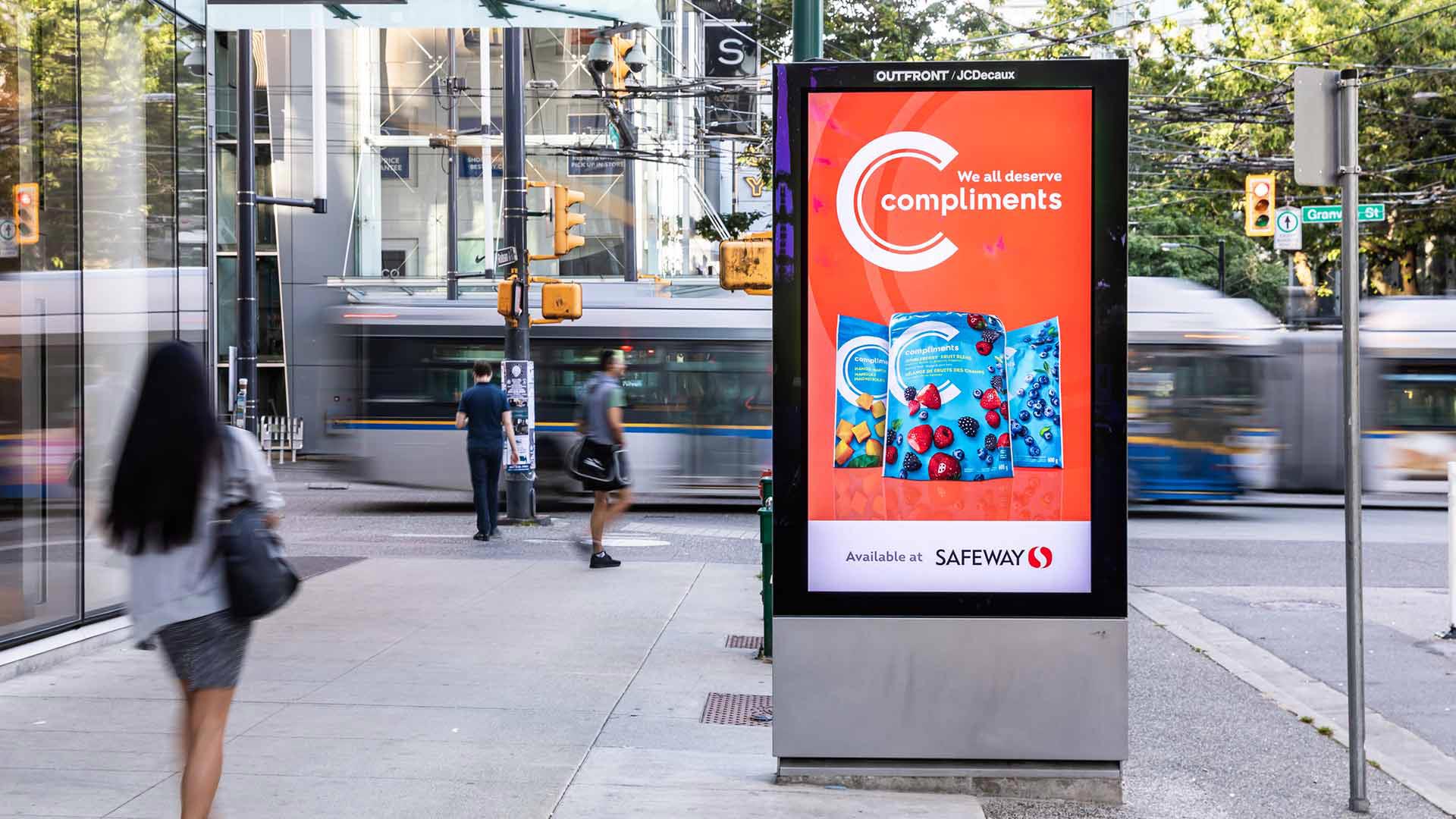Changing Landscape of Media and OOH Advertising

There is wide growth in the number of communication channels, from traditional video to online to social media, audiences are becoming gradually fragmented. The growing number of electronic devices competing to get attention are primarily diminishes individual reach and brand messaging effectiveness. Out-Of-Home (OOH) Advertising remains a key medium that environs audiences in their everyday atmosphere. It can also connect with them while they are near to the point of sale, and when they are more responsive and are less preoccupied by other media.
Sophisticated OOH audience measurement systems across the globe, such as Route in the UK, constantly shows the way the consumers are exposed to OOH advertising, matches intimately that of TV and greater than other major media.
Out of Home Provides a Higher % Reach Than Other Major Media
Source: JCDecaux
CONSUMERS ON THE MOVE: Be where your audience is
Growing urbanisation indicates that the OOH is becoming a relatively more important medium for more people. As spending are increasingly continuously, more time outside their office and home, the demand for OOH is increasing globally, offering brands an opportunity to reach a majority audience rapidly and consistently. Growing targeting technologies in OOH will let brands to communicate appropriate messaging to significant audiences in a more engaging and contextual manner. Whether increasing overall understanding or targeting defined audiences, OOH lets brands to communicate immediately to consumers more effectively with reliable accountability and to achieve higher ROI.
OOH: a threat or an opportunity?
The social distancing and self-quarantine are the new normal, which has impacted traffic and mobility, leading an impact on the OOH advertising. OOH advertising is considered as the conventional form of advertising which maintained a stable growth curve in spite of the constantly growing media landscape, fuelled by progressions in technology and changing consumer behaviour at a fast pace, this crisis will have a enormous impact on OOH advertising across the globe. In 2020, the economic crisis and such pandemics have offered an incredible opportunities to the OOH advertising to relearn and transform how the channel is perceived, seen and bought.
OOH will rebound smarter with data, technology and DOOH (digital OOH)
COVID-19 has brought restricted movement and a life far from social, as malls, office, high-street, pub, and restaurant gates were closed for several months in a severely hit nations globally. Furthermore, the market ambiguity and devastating economic crisis due to the pandemic have muddled the estimations and future for the OOH advertising market. However, such unprecedented times call for stop-gap measures and this crisis will bring that much-anticipated data driven technical shift in the OOH advertising ecosystem, becoming it more powerful as a medium and more effective for marketers.
Latest developments in hyper-targeting: OOH planning systems are incorporating with data sources involving mobile carrier data, shopper purchase records, and online browsing behavior. Marketers will be capable to utilize OOH to focus micro-specific segments.
Real-Time OOH trading will gradually increase, as more OOH vendors incorporate inventory into demand-side-platforms. The organization's ability to target consumers in real-time based on prior location histories has led to travel, automotive, and retail advertisers. Location-based mobile and digital OOH media are part of a larger multiscreen ecosystem that effectively strengthens brand messages to generate a deeper level of engagement with active consumers.
OOH will become more sensible as emerging brands are planning to take advantage of developments in facial/object recognition, internet-connected screens, and external data feeds. A convergence of science and art will lead to OOH that self-improves based on the people’s reaction. Dynamic content prompted by data feeds permits advertisers to modify creative in real-time based on external settings, including weather, CRM data, sports scores, traffic, and social media sentiment.
Targeting drivers: This includes an analysis based on the fact that car manufacturers are the early users of smart billboard technology. Porsche unveiled the world’s first cooperative billboard campaign in partnership with OOH Media, in Australia in January 2015. It used image recognition software to identify Porsches and display a company ad revealing, “It’s so easy to pick you out in a crowd.” Lexus chased suit later with a similar; though, more complicated Australian ad campaign. It employed an algorithm to match vehicle data with environmental information, such as weather conditions and local traffic, to create 80 variations of the similar advertisement.
Porsche is teaming up with Milestone Systems and IBM Analytics, video surveillance software manufacturers, to provide targeted billboard ads to detailed vehicle models on way to Australia’s Melbourne airport. These smart billboard software applications incapable of identifying specific drivers yet; however, the researcher from Sydney University of Technology projects that it is expected to be available in the near future.
In the US, some smart billboard ads are aiming drivers based on speed. For instance, in 2014, Cisco Systems used a billboard near San Francisco International Airport to encourage its Cisco Live event by sending messages of varying length, with faster drivers receiving shorter messages.
OOH is expected to be a fundamental part of social and mobile strategies, and similar campaigns is expected to be seen with OOH as a centerpiece. Coca-Cola unveiled an incorporated digital campaign in Times Square as an expansion of its hugely popular “Share a Coke” campaign, integrating large digital billboards, including Google search data, mobile and a socially triggered call to action.
OOH will start being identified as a direct response medium. As cardless payments, including mobile payments obtain traction with merchants, consumer use will increase. OOH is expected to increase its relevance along the consumer journey; a format recognized primarily as a brand-awareness driver can now become an instrument in driving real-time purchase.
In conclusion, the OOH presents audience reach prospects unsurpassed in the media landscape, especially reaching young and upscale audiences. The blurring of media boundaries, characterised by the digital OOH landscape and the rise of smartphone penetration, is expected to offer smarter solutions to brands feeling the pinch or using consumer sentiment opportunities, predominantly those targeting millennial audiences and supposing an immediate response.








